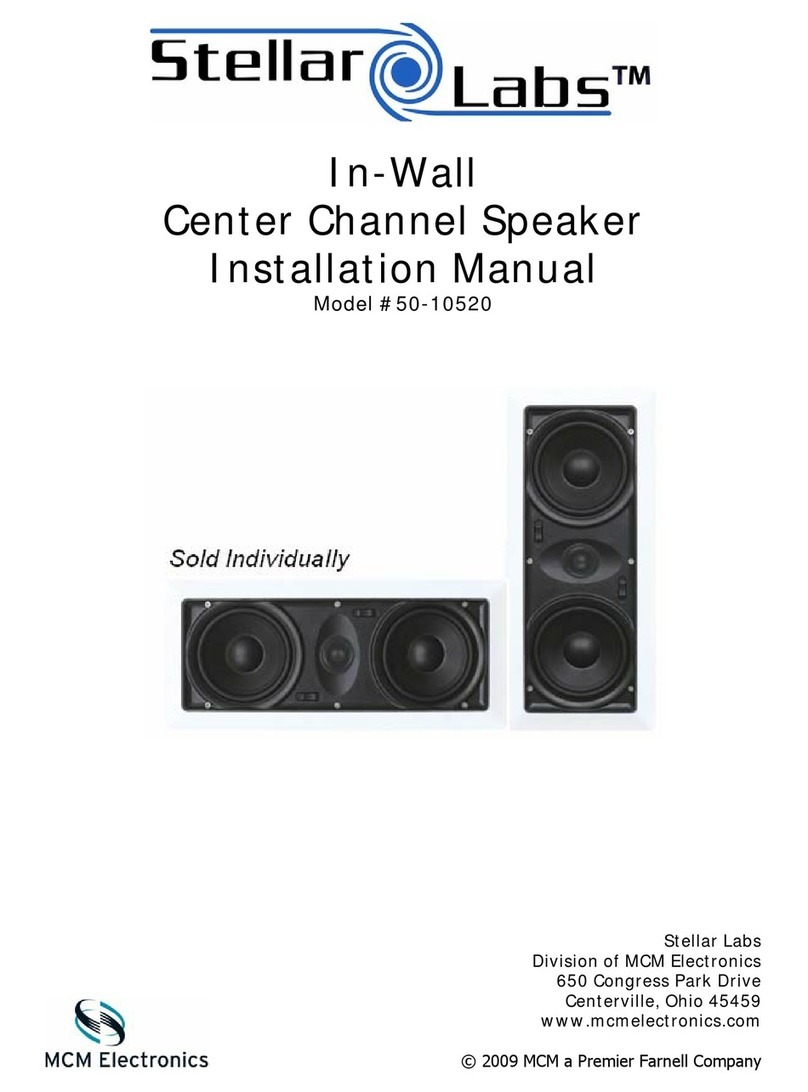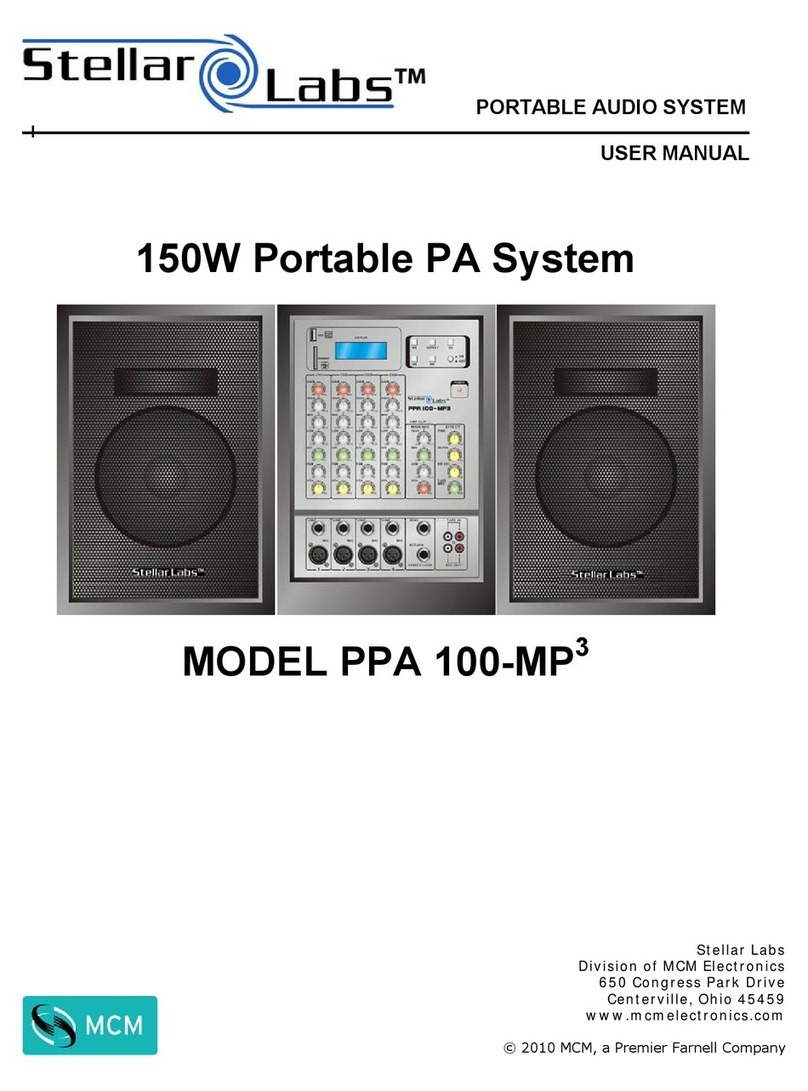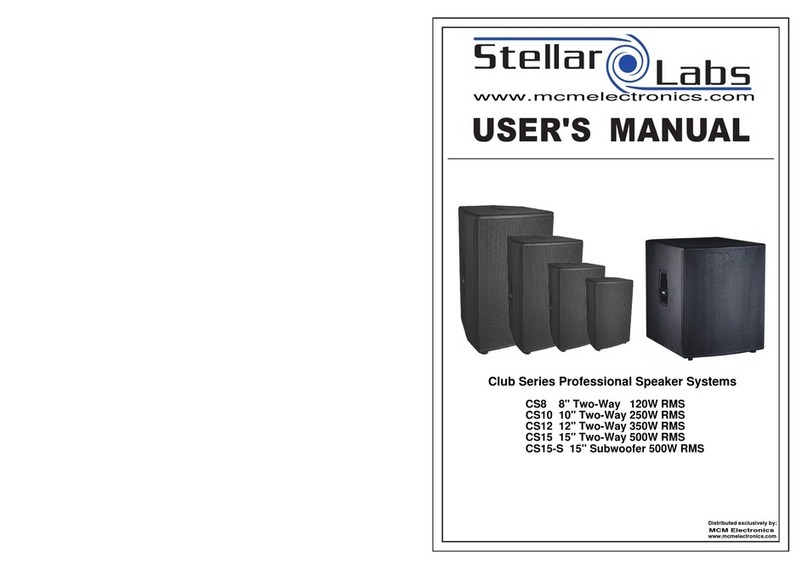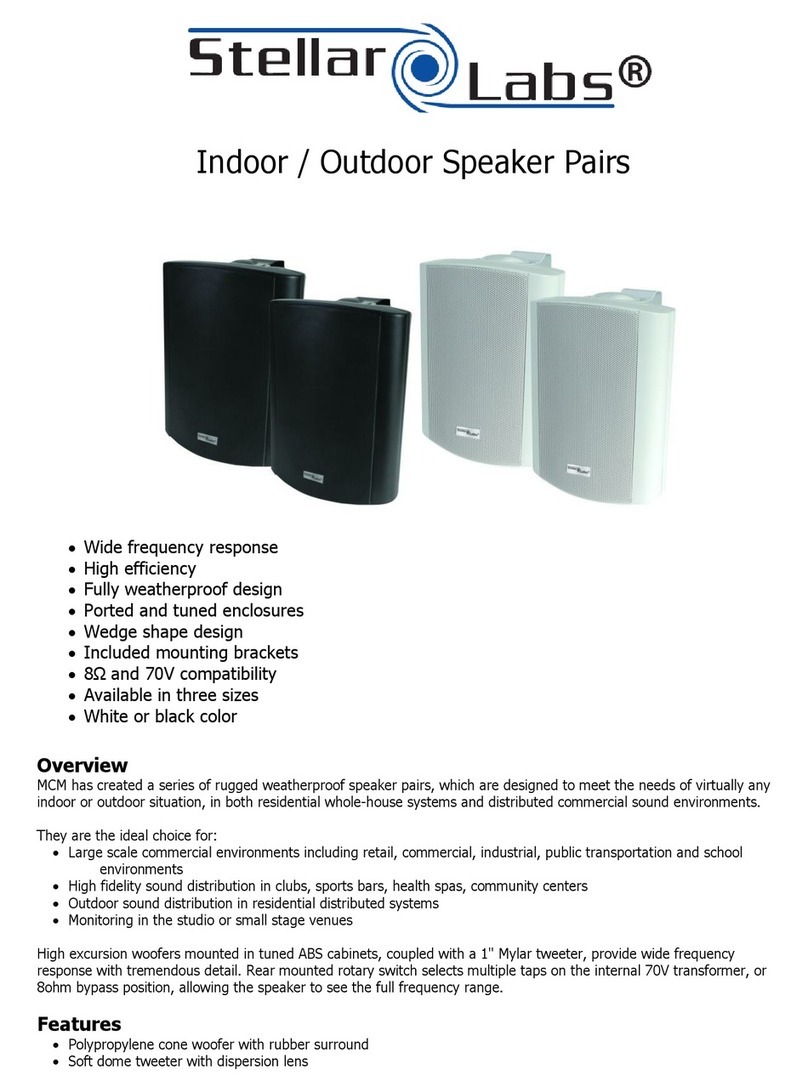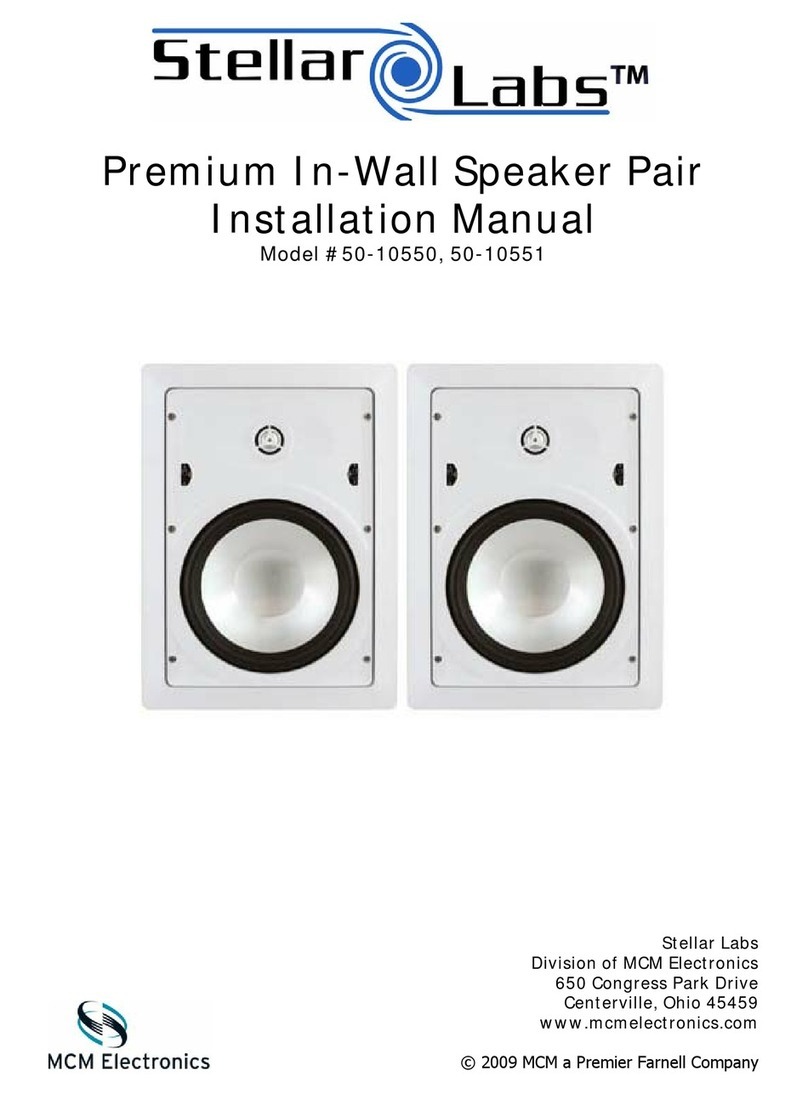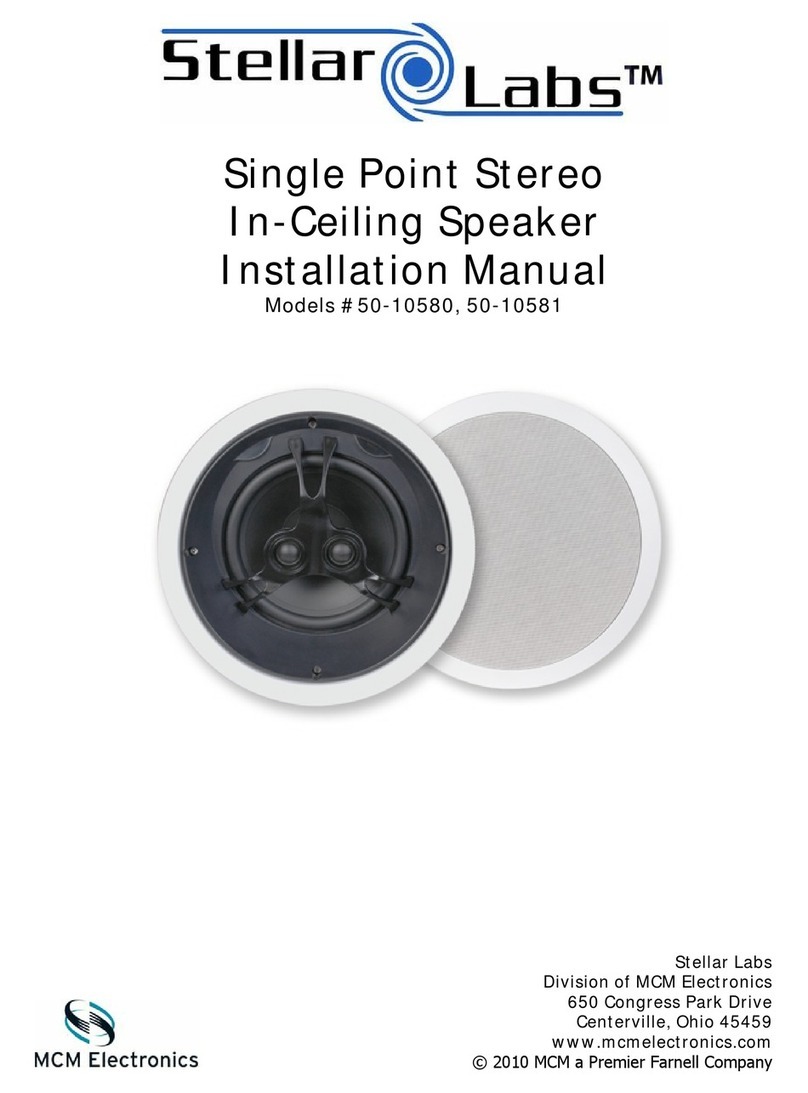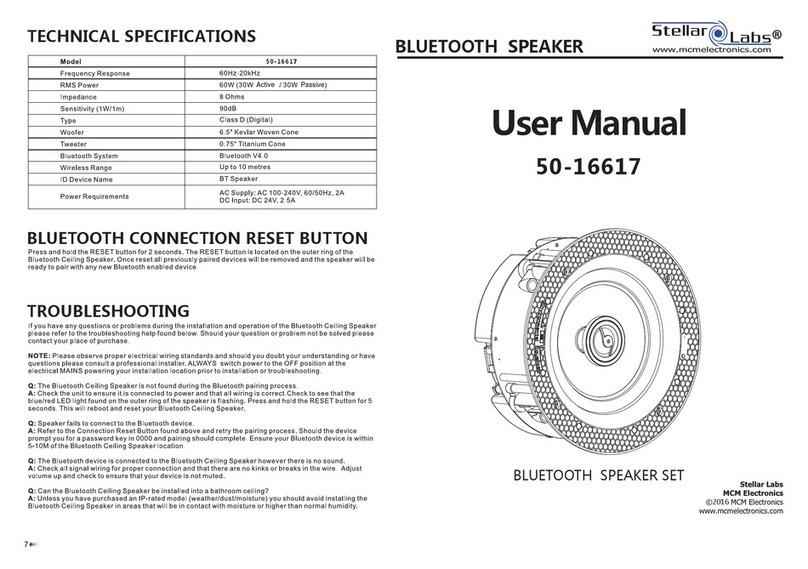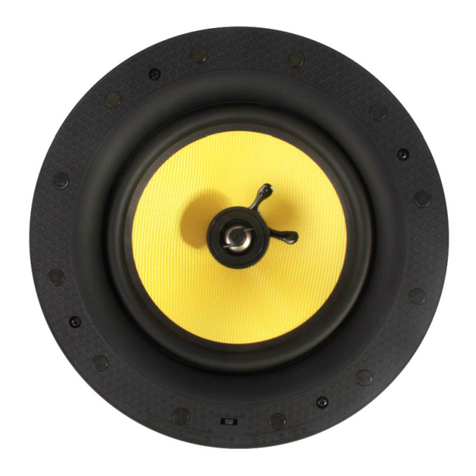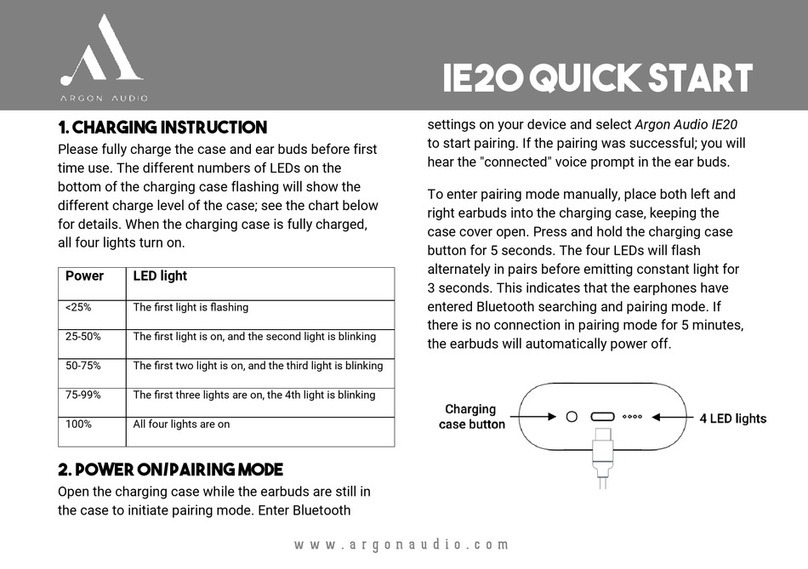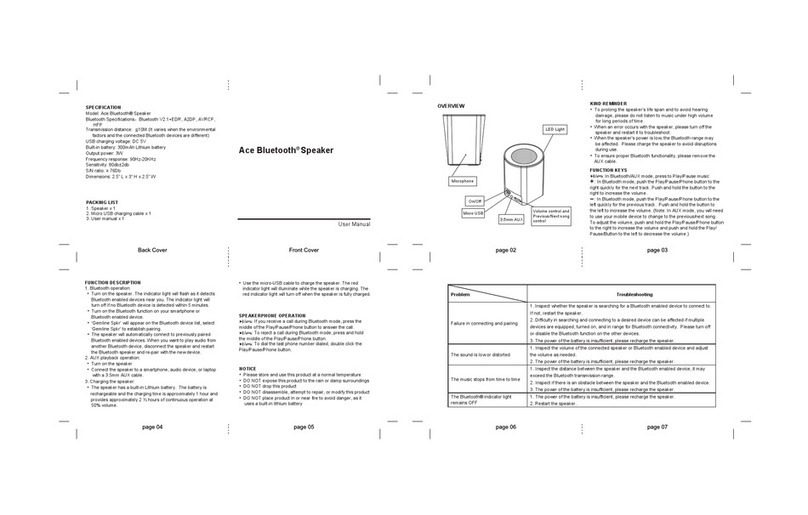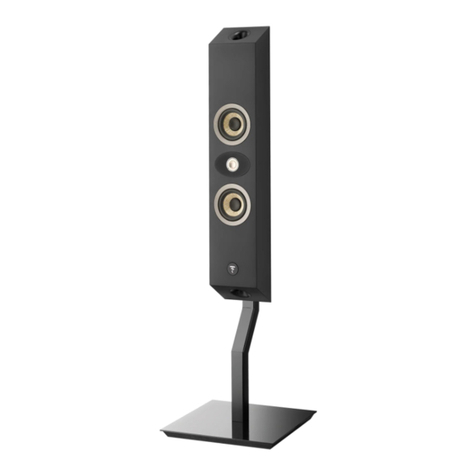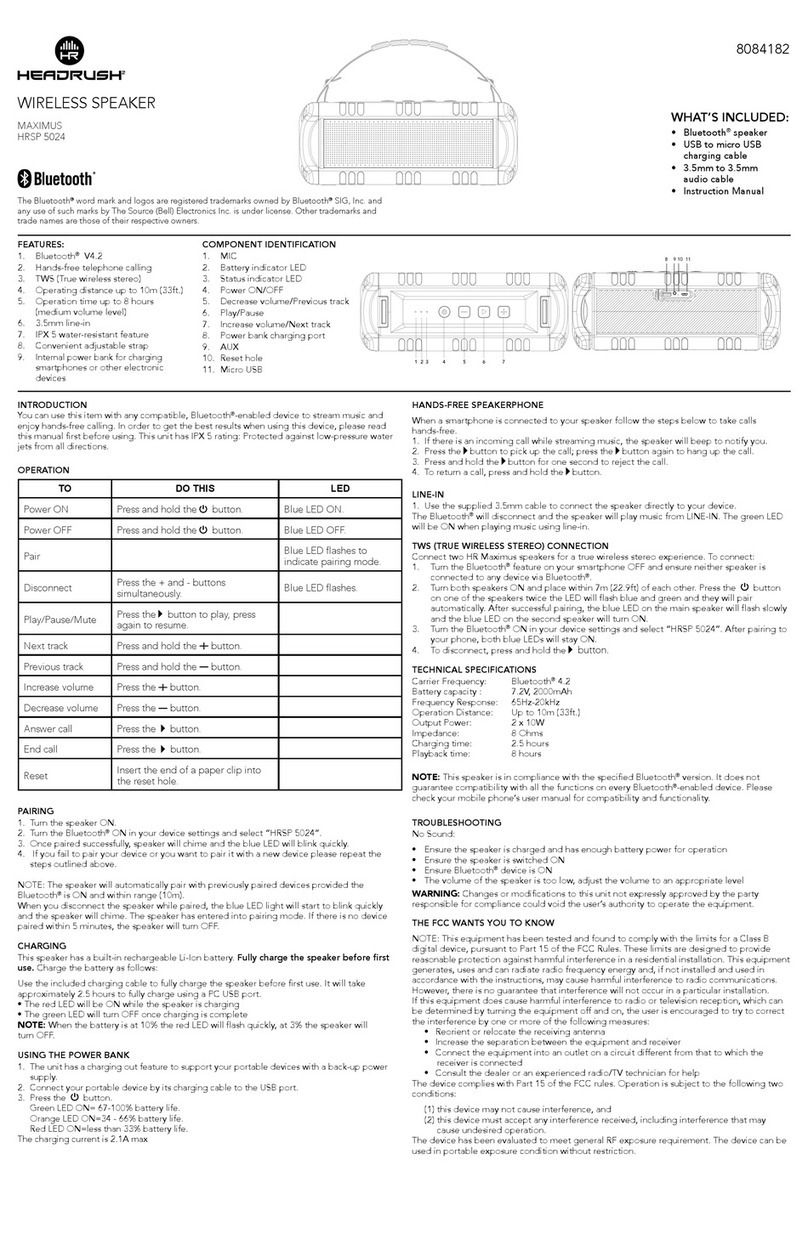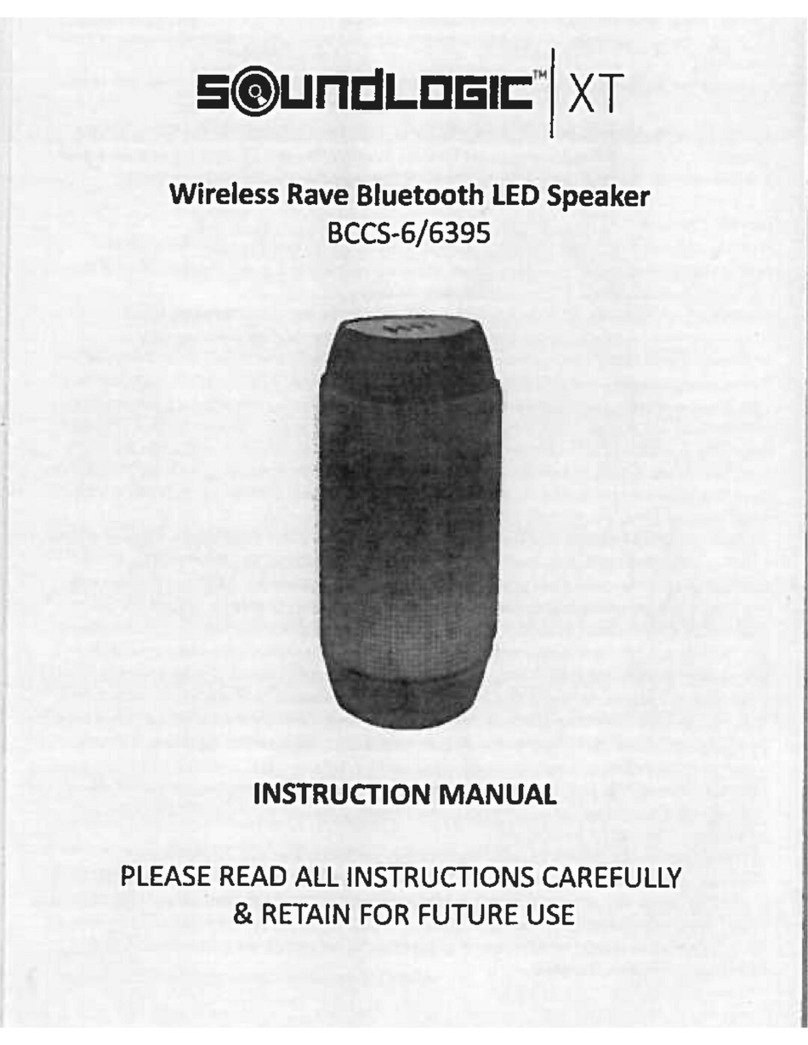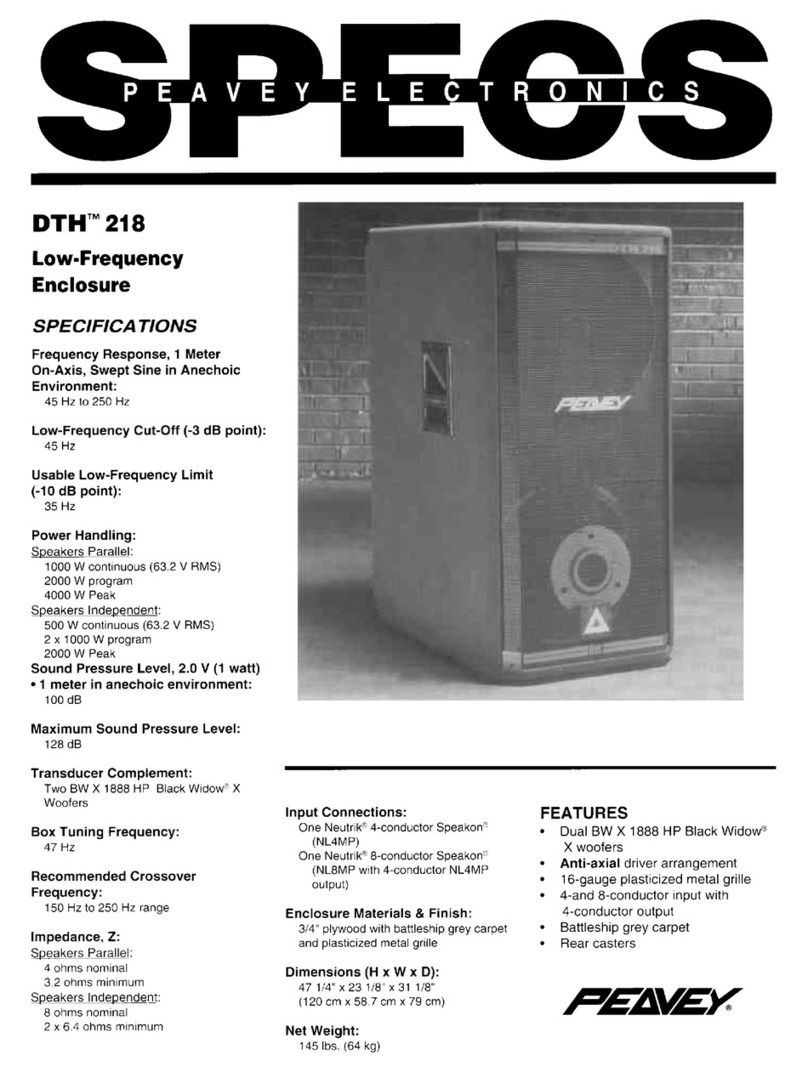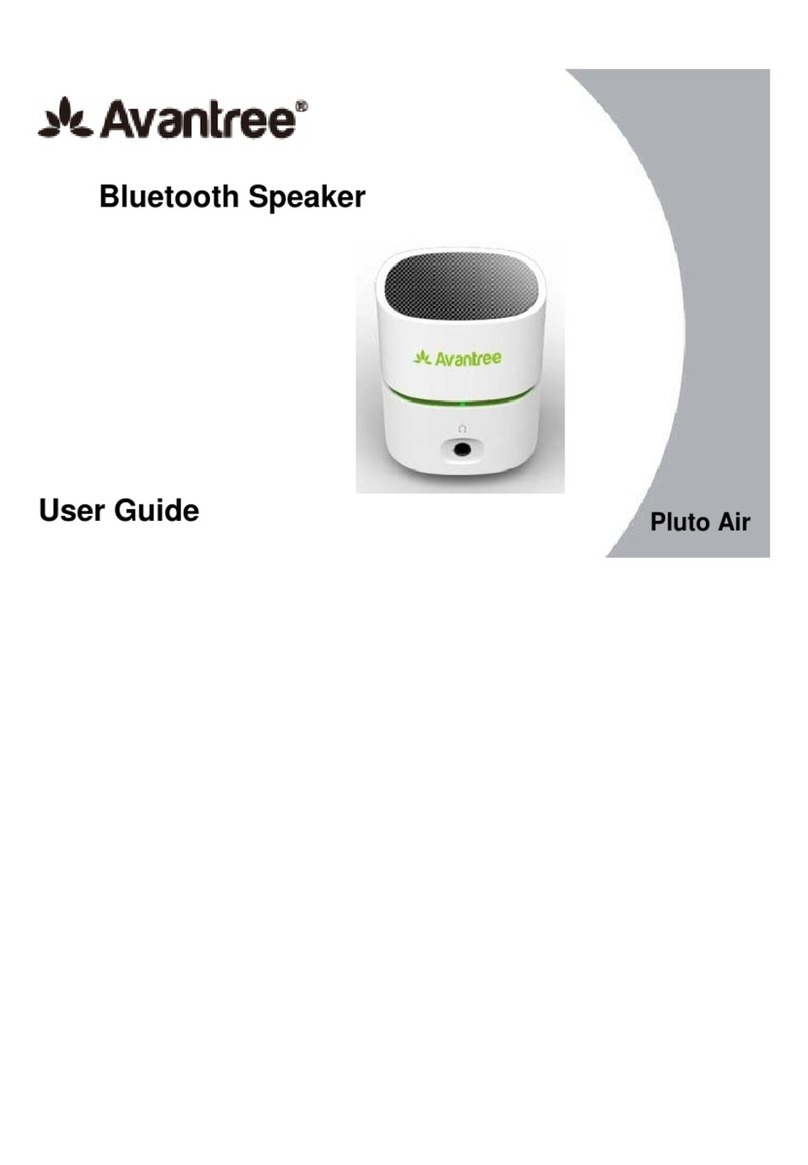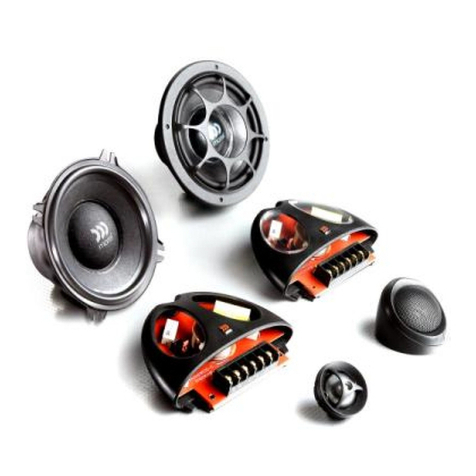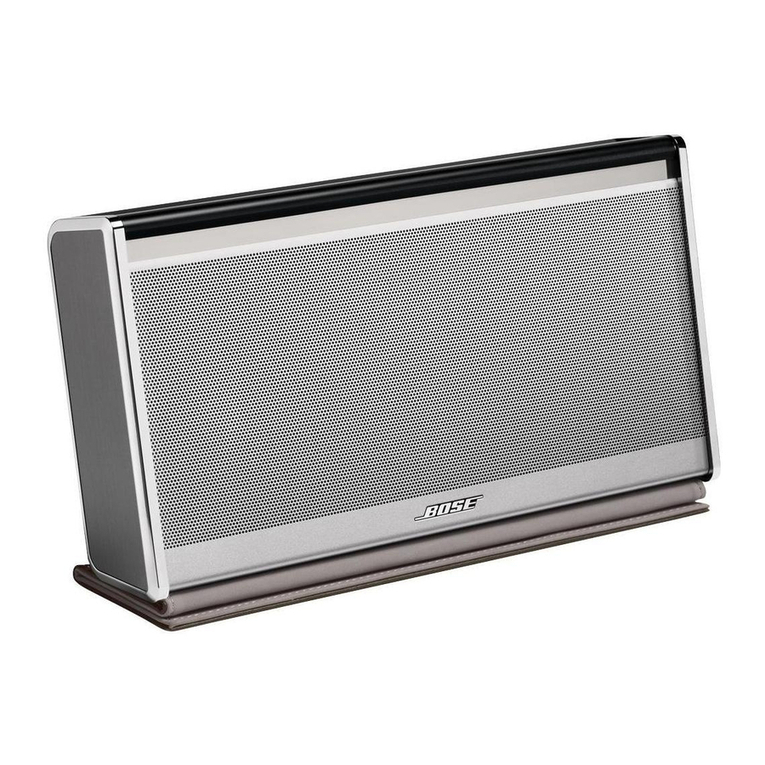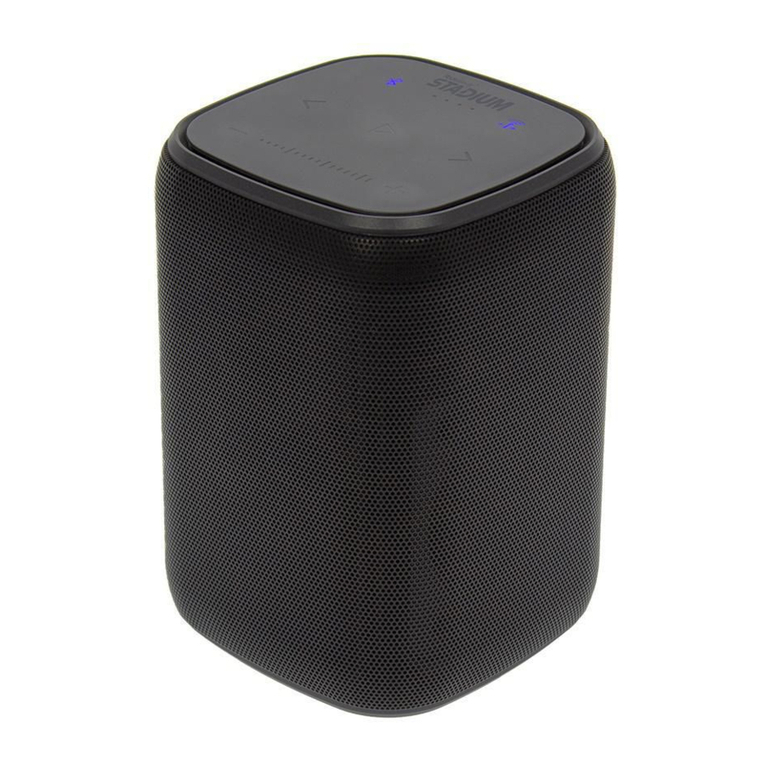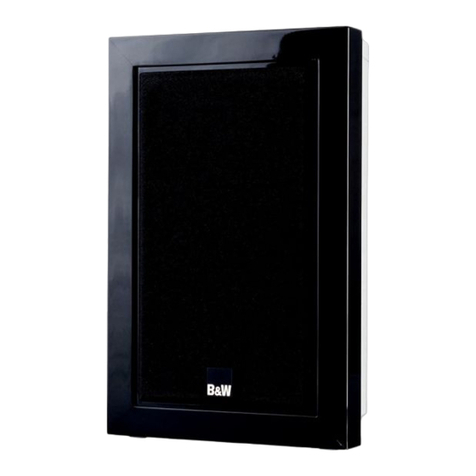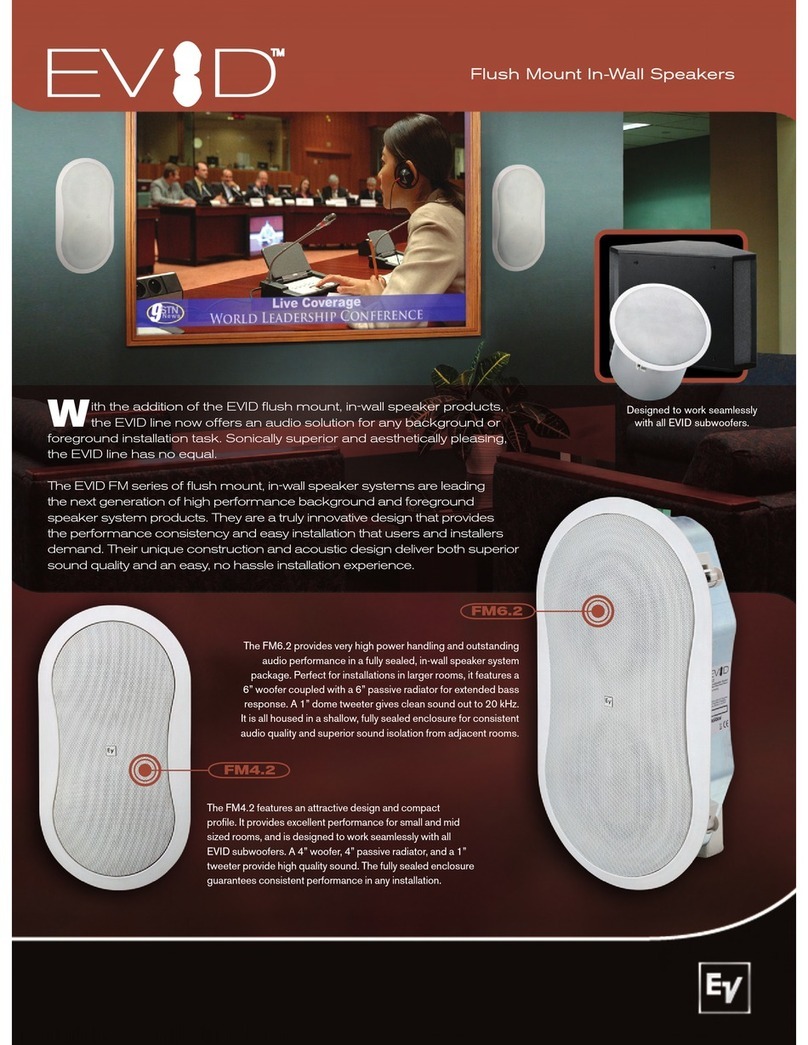
The PVC conduit is required if the outdoor volume control is to be used. The length required will be that to reach from the base of the
control in its mounting location, to approximately 6” beneath the ground.
Connection to a sound source
This speaker pair is intended to be connected to a conventional stereo receiver. If the stereo receiver is already in use, theses speakers
may be connected to the “B” speaker output. If the receiver is to be used solely for outdoor speaker connection, two pairs may be
connected directly to the receiver (speaker “A” and speaker “B” outputs), and the outdoor volume control may be eliminated.
There are multiple methods of connecting numerous sets of indoor/outdoor speakers to single sound source. Persons interested in doing
this should contact their MCM Electronics Sales Representative for more information.
Speaker positioning
Since Stellar Labs Rock Speakers were designed for landscaping use, they perform best when on the ground, as opposed to being placed
on a deck surface or in elevated planters. Unlike conventional bookshelf speakers perform best at eye level, the Rock Speakers tweeter
positioning and response curve were designed with the intention of these speakers being located on the ground.
As the listening area is typically large, do not be afraid to put some distance between the left and right speaker. For example, in a square
listening area of 30’ x 30’, the speakers should be located on the ground, on one side of the square, centered approximately 20’ apart, and
angled slightly inward.
Determine a convenient location for the Outdoor Volume Control. Ideally, this will be located someplace close to the location where the
speaker wire exists the exterior wall, but is not limited to this. Using proper fasteners, attach the volume control housing to the wall of the
desired location, with the conduit opening facing downward. Determine the necessary length of PVC conduit required to reach from the
bottom of the volume control housing, to a level 6” below the surface of the ground, and cut the conduit to this length (do not install yet).
Routing cable
Establish a desired location in an exterior wall, ideally close to the location of the sound source. If the sound source is located in the center
of the home, it may be helpful to rout the wire down from the source, through the floor into a basement or crawl space, then out the
exterior wall.
A hole must be drilled through the exterior wall to facilitate routing the speaker wire. If the exterior surface is brick, the ideal location for
this hole will be in a mortar joint, above the bottom layer of bricks. In vinyl siding, the ideal location is immediately below a bevel. Wood
siding is best to drill inside a vertical indent. In all instances, the closer the opening is made to the ground, the better. Note that it is not
recommended to drill through the poured or block foundations.
Take extreme care to note possible locations of other wiring and plumbing prior to drilling hole.
Drill the hole in the exterior wall, rout left and right speaker cables to the sound source, and connect. Pull all available cable slack to the
outside. Once the cable has been permanently positioned inside the home, seal the exit hole (with cable in place) with caulk.
Dig a trench in the ground, preferably with depth of 6” or more, from the wall exit to the location of the outdoor volume control (if used),
and then from the control to each speaker location.
Route the left and right speaker cables down the side of the wall, and into the trench in the direction of the volume control. Determine the
amount of length required to route both left and right speaker wires from the bottom of the trench, to the inside of the volume control box,
plus at least 12” (at this point, too much length is far better than not enough). Cut the speaker cable at this point and feed through the cut
section of conduit. You should now have a section of left and right speaker wire, beginning at your sound source, and ending after passing
through the conduit. Using electrical tape or other similar method, label the two speaker leads that originate at the sound source.
Take your remaining section of speaker wire, and feed through the same section of conduit, allowing at least 12” of extra length of wire to
protrude from the end. Note, all wires should enter from the same end (what will be the bottom), with all 12” lengths protruding from the
top, two labeled to identify that they originate at the source.
Connecting volume control
With the volume control housing mounted in its location, remove the round knob (simply pulls off), and remove the four Philips head
screws which hold on the cover plate. Remove the cover plate, and then remove the interior clear silicon gasket seal. Locate and remove
the two Philips screws that hold the volume control assembly inside the housing, and then remove the assembly.
Feed the speaker cables through opening at the bottom of the volume control housing, then insert the conduit into the opening. Allow the
12” of additional speaker cable length to protrude from the front of the housing, and position the conduit so that it extends from the
bottom of the housing, into the trench. Route your left and right speaker cables from this location, one to each of the final locations of
your Rock Speakers.
Using the instructions provided with the volume control, attach the speaker wire as shown. Take extra care to make sure the correct wire
is connected to the inputs and outputs of this control. Reversing these connections can cause permanent damage to the sound source. It
is also critical that proper (-) and (+) speaker polarity be observed throughout this system. Depending upon the sound source, improper
polarity may cause damage and will adversely affect sound performance.
With speaker wire connected to the volume control, reinstall the control into the housing. Extra length of speaker wire will likely not fit
inside this housing, so as this control is reinstalled, it will be necessary to pull extra wire length from the bottom end of the conduit. Once
sufficient slack is removed back out the bottom of the conduit, reinstall the housing, silicon rubber seal, front cover plate and knob.
